 Written by Guest Blogger Alessia Zen
Written by Guest Blogger Alessia Zen
A story of living with CRPS (the struggles and triumphs), the hope for the future, and what the community truly needs.
Ever the dreamer as an eleven year old little girl I wrote my life goals on a yellow post-it note, proudly signing it with juvenile cursive writing- in my mind by signing with a “signature” this became official just like a real-life grown up. I wrote that I was going to become a doctor/archaeologist (emphasis on the slash, in my mind these careers were not mutually exclusive), challenged myself to read one thousand books, hoped to write a novel, promised to travel the world seeing all of its wonders, and that I would discover a cure for a disease. I was a supremely confident child who liked to contemplate anything and everything I learned about the world and what my place in it would be; I can say today fourteen years later that the goals my younger self dreamed of are still the same ones I hold dear to my heart now (with the notable exception of having dropped the archaeology aspirations as I sadly learned doctor/archaeologist is not an actual job- such are the woes of life). However, what I could not have known at the time as I sat writing and contemplating my future was that in one short year the world as my innocent eleven year self knew it would be utterly and completely shattered with a devastating medical diagnosis of a rare, mysterious condition forcing me to grow up overnight, that no one in my life had ever heard of before. At the tender age of twelve in the guise of four seemingly innocuous letters a fiery red monster came into my life -CRPS- the acronym for a debilitating and devastating neurological condition which holds the unfortunate misnomer of “the suicide disease”, and is aptly described as “if hell were a medical condition” has gone on to impact every aspect of living for over half of my life now making my goal list ever more important to hold onto while simultaneously being all the more challenging to achieve. You are probably wondering why you have never heard of this condition before if it is described in such grave terms, I am writing this to shed some light.
CRPS stands for Complex Regional Pain Syndrome (formerly Reflex Sympathetic Dystrophy (RSD)), a rare neurological disease and chronic pain condition where the primary symptom is severe, debilitating, unrelenting pain- sharp, stabbing, burning, aching, tingling pain twenty-four hours a day seven days a week of screaming, tear out your hair nauseatingly awful proportions of pain that does not end. There is no known cure. Identified as the most painful condition medically known, ranking a 42/50 on the McGill Pain Scale (yes, this is higher than unprepared, unmedicated childbirth, cancer pain and arthritis), current research indicates that the cause of CRPS is multifactorial with malfunctions occurring in the Central Nervous System (CNS), Autonomic Nervous System (ANS) and Immune System. Essentially what occurs in the disease process of CRPS is that instead of pain and inflammatory responses in the body shutting off after an injury has healed, they become amplified in a vicious, disabling and debilitating looping pain cycle- the electrical wiring of the body has gone haywire. Underlying pathological mechanisms cause a distinct set of symptoms including systemic sympathetic neurological dysfunction, and in the affected limb(s) gross edema, mobility issues, muscular atrophy and spasms, temperature asymmetry, changes to bone and vascularization causing marked skin discoloration, alterations in nail, hair growth and sweating, changes in skin texture and severe allodynia (hypersensitivity). This means the lightest touch by something as harmless as sheets or water from a shower causes excruciating pain- not to mention car rides, hugs or many other aspects of daily life we often take for granted until it is too late to realize how dramatically life can change in a single moment. Limbs can rapidly become deformed and lose their function. Secondary constitutional symptoms that can develop include cognitive dysfunction (concentration and coordination issues, memory loss, confusion, and brain fog), mood changes (depression, anxiety), insomnia, gastrointestinal problems, temperature intolerance, and extreme fatigue among others. While improvement is possible with early treatment, in many cases CRPS is a progressive condition which has the potential to spread from the initial limb to other areas of the body; it is a condition which is relentless, unremitting and unforgiving for the damage it causes.
Many days I cannot get out of bed because the symptoms of CRPS are so disabling with my very own swollen rainbow leg turning into a variety of strange patterns and colors- blue, purple, angry red, and fiery orange. At times it looks like a dead limb. My leg is so ice cold the sharp freezing temperature can be felt through thick fleece pants, yet my leg paradoxically burns as if a roaring fire has been lit directly upon my skin, knives are furiously stabbed up and down and bricks weighing tons crush my bones. Simultaneously spasms of horrific intensity lift my legs off my bed, and later on pins and needles set in so strong I have to use my arms to pick up leg to move it, while within in minutes of standing color changes occur as blood furiously tries to perfuse constricted blood vessels. With careful attention and herculean effort, joints need to be gingerly moved out of the position they have twisted themselves into. I cannot weight bear through my leg without the use of crutches and as the years have gone by I have developed an array of widespread neurological symptoms throughout my body and CNS sensitization. Due to the variety of symptoms that are experienced for individuals affected by CRPS as their body turns on them and increasingly falls into a state of “high alert”, the world itself becomes an enemy in many ways as any light, touch, sound, vibration, movement, temperature change, stressor (physical and emotional) and the very acts of living daily life can send you into a flare lasting days, weeks or months. It is a condition which is extremely fatiguing, both physically and mentally, and notoriously difficult to treat. In fact, if treatment is not begun in the early stages outcomes are often not favorable. As it is a condition which is highly variable and unpredictable in its course, a cycle of gains and setbacks is typical- I have had to relearn how to walk more than once. This is compounded by the fact that there is an egregiously serious lack of understanding of this condition (both medically and societally), targeted available treatment centers and research funding, despite CRPS being identified as early as the American Civil War. Alarmingly since there is a profound dearth of awareness of this condition, majority of patients with CRPS often sadly experience a large degree of social alienation, wait extended periods of time for an accurate diagnosis and are accused of faking symptoms- this is dually deeply traumatic and damaging to patients mentally and physically. In direct contradiction of the blatantly visibly apparent pathophysiological symptoms I was presenting with I was told this “was all in my head”, at one point solely being offered psychiatric intervention as I supposedly “wanted attention”. The initial doctor I saw falsely reported a test as negative when in fact it indicated clear signs which can help to diagnose a case of CRPS, in turn I was also refused a referral to a specialist despite several doctors noting I had an extremely severe and textbook case of CRPS. CRPS presents the perfect case of how essential awareness and knowledge is to combat stigma, misinformation and how awareness is the surest and most important tool those in the CRPS community have in our arsenal to advance towards a cure, and at the very least a baseline knowledge of CRPS in the medical community.
Life with a chronic illness is a delicate dance. A balance has to be struck between caring for what amounts to a full time job in managing your condition but also living life passionately versus existing, in a world that is not readily acceptable of differences. This becomes even harder in the age of comparison and social media in which we live, where oftentimes people are held to others standards. When those standards are not met one is labeled as lazy, a failure and just simply not trying hard enough. When no satisfying answers are given, when no instant fix or permanent solution can be found(after all, this is the 21st century that is meant to have answers for everything), people become frustrated and turn in disbelief, skepticism and anger towards the individual with CRPS thinking the reality of this simply cannot be true- it must be exaggerated. When people are unaware of the nuances of living with CRPS a lot of hurt can ensue. Friends slowly trickle away, relationships crumble as blame, anger, loss, and frustrations are thrown around, missed opportunities abound. The very basic dignity we need at the moment of our greatest suffering is stripped away bit by bit as people realize that you are not getting “better” that this way of life is the new normal and the onus of blame falls on the patient- it’s our fault, if only we could do more then surely we would be “fixed”.
If determination alone could have eradicated this condition I would have been healed the minute I was diagnosed, and in the moment each and every single time I have come back from a setback. While undoubtedly adopting a positive attitude dramatically increases one’s ability to handle a chronic illness, positivity alone cannot alter underlying physical pathology which is why there is a desperate need to have the unknown questions surrounding CRPS answered. In an effort to “get better” I have had countless surgeries, ketamine infusions, epidurals, weeks of inpatient hospitalizations, lumbar sympathetic nerve block injections, and hundreds of hours of physical and occupational therapy. On a daily basis I take several forms of medication all in a mammoth effort to function (these include anticonvulsants, calcium-channel blockers, anti-spasmodics, narcotics and anti-inflammatories). There has also been experimental treatments, alternative treatments, hypnotherapy, heat therapy, TENS, biofeedback, an implantable medical device, and cognitive behavioral therapy. Personally, I am a big believer in adopting spiritual practice, yoga, meditation, distraction techniques and mindfulness as a means of coping- those have been my saviors in coping day to day along the way that I have the power to do on my own. I have physical scars that have been closed and reopened again and again, my leg was stuck completely straight for nearly two years and then distorted into a bent position for another year, I have had to take the same medication given to cancer patients due to the severe nausea and vomiting from treatments, a treatment caused grand mal seizures as the result of an adverse reaction, I had a device implanted and then removed due to complications- treatments for CRPS are no walk in the park, it is a serious and grueling process of trial and error.
As I do not look visibly ill and CRPS is a relatively unknown condition I have often faced a lot of discriminatory behavior, words and actions (such as being stopped from taking a vacation, not being allowed to use a chair to sit in class, have had my need for disability services questioned and so on) and found dealing with people’s misunderstanding and lack of empathetic understanding (it is important to note that there is a marked difference between empathy and sympathy which is what many people wrongly believe is what someone with chronic illness wants)even more difficult to manage than the condition itself. I have been told that I do not want to get better, that what I am feeling cannot possibly even be real or hurt as bad as I am describing. I have been told that I just need to suck it up and have the right attitude to think it away (my friends would tell you that I am the most annoyingly optimistic person they know), that I just can’t handle this and need to move forward, it’s not that big of deal, get over it and get on with life. If I talk about the difficulties associated with CRPS then I am focusing on it too much. There are people who say how very nice it must be to not be in school or to not have a job (not thinking of the very real and serious financial, academic and life planning implications this diagnosis has thrown a wrench deeply into), that at least it’s not cancer, or how great it must be for me to take narcotics to “get high” (nausea, confusion, dizziness are more apt descriptors). I hear that I don’t really need to take my medications I just need to get out more (never minding the fact that medications to help control spasms and dilate my blood vessels to increase circulation are what allow me to function). It’s questioned how can I be that tired when I’m so young, how can air (eye roll) hurt me? A teacher told me I should just amputate my limb so that I can attend more school. Grimaces from pain on my face in the rare occasion they show result in being asked why I am mad or being a bitch. Many have told me that I cannot possibly be happy in life, that I am a burden for my family and that if they had my life they would kill themselves. Medical professionals every time I go to an appointment for a separate concern question if I really have CRPS (particularly because of my age as the average age of diagnosis is around 40 years old), have told me it cannot be that bad since I am not in a wheelchair, and upon seeking treatment for a breast lump the minute the physician discovered I had CRPS she told me that I just needed to get off of my crutches and I would be fine since I was overreacting- a separate surgeon later went onto remove a tumor (benign) that was over five centimeters. There is a constant push that if I somehow just did more research there would be an answer for a cure (I can assure you that I spend hours weekly scouring medical journals and information from all over the world looking for answers I desperately not only want but have an imminent need to acquire). Exasperation unfolds at how one day I can do something and the next I cannot. People assume because I am not depressed and laugh that there cannot really be that much of a struggle occurring in my life. Many proclaim that they know better in how I should live my life, or if they were me they could handle it so much better- this has personally led me into a lot of situations where in order to please someone else I have done things that have set me into a flare and backfired greatly. This could be as simple as going out when I knew I needed to rest. The individual with CRPS alone is the person who pays the consequences- more pain, longer sleepless nights, increased medications with terrible side effects- of all actions taken, so pushing someone even if meant well can have devastating implications. Unfortunately, the few examples I have written of are not unique to my story. Read any blog or article on CRPS and you will see how much of a shared experience such attitudes are for those of us with CRPS. This commonality shared among CRPS patients in the crippling aspect of people’s judgments, inaccurate perceptions, and negativity we face fueled by a lack of understanding and knowledge, misinformation, pervasive inaccurate stereotypes, and the basic questioning if such a horrible medical condition can even exist is extremely disconcerting. I will never be able to grasp the callousness humanity can display in the face of not understanding something but I choose to confront such ignorance with the positive step of sharing the reality of my life instead of bitterness or anger- life is too beautiful for such emotions.
Many negative stereotypes pervade those who live with CRPS and other chronic illnesses- this urgently needs to be addressed so that those suffering, often in silence, can be built up with positivity to an overall health and life balance whereby no matter how many times life may be telling you no, you develop new strategies to say yes. I am just a girl, with a single voice, living my life with CRPS hoping to impart some positivity into the world, my hope is that in sharing my story it may empower someone else and collectively our voices can rise together. If I can be one drop of water in the ocean to help change the culture around this illness then I’ve succeeded. If one person reaches out for help with tips on how to get through this or someone stops to consider this condition and their reactions to individuals with it then I’ve succeeded. In the face of the seemingly impossible facts we do know about this condition, incredulity often arises saying this cannot possibly be real, but I can assure you that it is a very brutal medical reality for millions of individuals across the globe. If awareness can be increased of the true nature of what someone goes through on a day to day basis living with CRPS, especially how strong we have to be to face the world when that is often the trigger for our symptoms, then I believe the commonalities you hear from CRPS patients of not feeling like they are heard would be changed. No one should ever feel that they are not believed. In order for patients to successfully manage chronic illness, acceptance is critical so that new adaptive ways can be developed to make life easier as well as minimizing triggers, to aid in creating an environment which optimizes health outcomes. However, oftentimes acceptance, adaptations, asking for help, and knowing when to say no can be seen as “giving in”. As health news typically focuses on acute over chronic conditions, what the public cannot understand is how demanding, emotionally and physically draining it is to control CRPS, how the simplest of tasks become your own personal Everest. Chronic illness is like drops of water slowly wearing down a surface until it is finally raw and exposed to the elements; there is no break from it, you carry it with you wherever you go.
Yet, strength comes from us living with what is rather than trailing into the land of what ifs and as humans as long as we are breathing change is possible, we can live and inspire and make our way through life even if you have been dealt the card of CRPS and all the difficulties that it entails. There is much more to me than CRPS and so very much I want out of life regardless of its diagnosis. Those of us in the CRPS community desperately and urgently need research to be done, myths to be busted and solidarity shown so that we can have a chance to achieve our dreams. It is as much a part of me as scar- it might not be pretty but it is there visible every day, and I actively choose to go on each and every day because I have life worth living. Never allow someone’s judgment to take your worth, to make you feel less than. You are not alone. Your voice is heard. Your pain is real. CRPS is real. The symptoms that are so strange you yourself are unsure if this can really be happening are real. The bone crushing, and emotionally, mentally, physically draining exhaustion from the fight your body is engaged in which makes the tiniest things a battle won when you complete tasks is real. Hope is real. I cannot describe the joy I feel in the morning when I wake up and can wiggle my toes- in 2015 I could not do this. To others this may seem insignificant, but when you have CRPS you have to learn to be your own marching band and champion all those achievements that only you know in your heart how magnificent they are- each degree of flexion or extension of a limb gained, each time you can stand a moment longer, each time you laugh a little longer and that wonderful moment when you realize that yes while you have this hanging over your head, in small ways each day you can move forward on your own terms carving out a unique life that works for you regardless of societal expectations and definitions of what constitutes “normal”. Life is not perfect yet that universal truth, is what makes life remarkably special- magic lies in imperfections- it is through challenges where we find our strengths and most importantly our dreams.
In spite of the hardships that have come into my life uninvited I have continually learned how to adapt to each new circumstance that has come into my life along this journey, redefining “success” and gaining a greater appreciation for life each passing day. Many of the achievements I am most proud of no one but I would be aware of. As a recipient of scholarships I hold a 4.1CGPA undertaking a BSc in Health Sciences which I have every hope to continue so that I can apply to medical school however long it may take me, I have climbed to the top of Angkor Wat, swam on The Great Barrier Reef with Nemo, watched the sunrise over the Ganges River, lived life fully as a friend, daughter and sister, having always maintained this is not going to be the defining feature of my life, even when that is how people think I live. I have learnt along the way that when I try to ignore my CRPS I get into big trouble, for a long time I was obsessed with hiding what I needed, how I was feeling, tried to fit myself into the world rather than mold it around what was best for me, which pushed myself further down the rabbit hole of CRPS, worsening it greatly. No one prepared me at 12 that at 25 I would still be living with this, it has brought me to my knees but through that I have developed into an individual who chooses to see the good in everything, living life mindfully (my sister may possibly refer to me as Gandhi) and wanting to leave a positive mark in this world. I don’t know where the future will take me, my life is a twisted web of uncertainty commonly taking two steps forward and ten back. Hopefully I will find my way to Australia for medical school as I do much better in warmer climates; the Game of Thrones slogan “Winter is Coming” incites as much fear into me as all the character of Westeros as cold is one of the worst triggers for CRPS. I know it will be slower and at my own pace, and I have to remind my type-A, perfectionist self that this is ok, when many critique me. I may have climbed those stairs to the top of Angkor on my behind, could swim for no longer than ten minutes and more often than not I am on the end of reprehensible judgements and comments that come out of ignorance, I may have “only” completed two years of university towards my degree having to withdraw under extenuating circumstances despite A+ grades in classes because I simply physically could not go on, yet the point is I’ve managed to make inroads towards my goals in my own way, albeit with some very odd and twisting pathways. Living with a chronic illness often what people assume to be are your weakest points in life, are in fact your strongest moments requiring great stability and self-assurance. For me, the decision to stop school temporarily two and a half years ago was single handily the hardest decision I have ever made in my life. I want nothing more than to become a doctor working with Doctors without Borders and have the academic abilities to do so, however at the moment CRPS seems to have a different plan- I say go right, it turns left by going up, down, taking a U-turn and then a somersault. The struggle we face in having a chronic illness when our minds and attitudes are capable of achieving anything, reaching the moon and stars, but your body is betraying you at every turn is heartbreaking- especially when people assume if you just tried a teensy weensy bit harder to get there you could. Knowing when to put your health first, to slow down and re-evaluate, to block out extraneous noise is the most important lesson you will learn on the journey of chronic illness, as life with chronic illness is not black and white, it is fifty thousand shades of grey. There is loss, heartbreak, anger, hurt, frustration, disappointment but also extraordinary moments of humanity- laughter, joy, love and horizons expand within even if the outside world shrinks at times.
I have been remarkably blessed in a multitude of ways in my life- my parents are my fighters, my doctors are my heroes who watched me grow up just as my family did, my sisters are my laughter factory, my friends are my cheerleaders, the world is my inspiration. I hope I can do the same for others, to positively impact the life of someone suffering right now. Maybe there is someone who has been recently diagnosed, who is scared and hurting, or someone struggling to get an accurate diagnosis, another unsure how to go on, or a family crippling under the burden and fear of what has so unfairly been hoisted upon them, to those I want to impart hope, it is always there, ever present do not ever lose sight of that even when you cannot understand what is occurring and communication breaks down. Take a moment, step back, close your eyes and take a deep breath. Maybe those who are reading this can begin discussions among friends and family of those afflicted with CRPS to give a small piece of insight into what CRPS is truly like as patients typically minimize the impact the illness is having in effort to maintain normalcy. The stark dichotomy we present to the public versus the reality of what we are feeling is staggering. In fact, often when people compliment me that I look good is often when I’m feeling at my worst- we are powerful masters of disguise wanting to live as normally as possible. Although, this double life approach can actually cause more harm than good since it is exhausting by any measure and management, support, and adaptation are key to successfully managing CRPS.
Being diagnosed with a chronic illness is a terrifying life altering experience in every possible way that you can imagine and in all the unsuspecting ways you couldn’t even begin to imagine, but a diagnosis does not mean life has to end. The patient experience, sharing helpful information (especially “tricks” that can help alleviate symptoms) and input is critical to the healing process in finding ways to manage this condition. I firmly believe that our perceptions and the way in which we choose to view life greatly shapes our reality, therefore it is of the utmost importance that those with CRPS have a strong foundation of support, love and understanding. There is such a profound lack of understanding about this condition that great damage is done to patients through delayed diagnoses, improper or ineffective treatment as well as discriminatory barriers that are discreetly and at times overtly built into and exhibited by society. I want to challenge the dialogue and perceptions that so often unnecessarily plague those affected with CRPS that only further complicate an already difficult situation. I want to begin a discussion to get people fired up about the fire that is CRPS, so the seeds of awareness are planted to make people aware of this devastating condition, and for those that are afflicted with this for them to know that there are people out there who feel the same fear, concern and frustration not only from the illness itself but also the negative perceptions all too often labelled on you. CRPS is an enigmatic condition that is both fascinating from a scientific and human perspective in a myriad of ways. There is a deep need to have a strong media presence of CRPS so that it slowly trickles down into mainstream culture. I implore whoever is reading this as November is CRPS Awareness Month, share this, discuss it, pin it, post it, do some research on CRPS and maybe in doing so another person may evaluate their perceptions about those they hold of someone living with CRPS. Alternatively someone with CRPS may smile knowing there are others out there in the world right now who are reading about their condition bringing them hope for a better future with less uncertainty, less judgement, less pain. Knowledge is power and so I share a small portion of mine dedicating it to all the amazing, powerful fighting individuals with CRPS, the friends and family who support them unceasingly, and the doctors who dedicate their lives to helping us. Small acts can collectively together bring big results. Whenever someone was having an exceptionally bad day during physiotherapy sessions, my physiotherapist would bring out her magic wand to cast a healing spell over us to take away our pain. This simple act of kindness, that would bring hope and a jolt of laughter with big smiles when people needed it most sticks with me every day, so I say in honor of that, that knowledge and words hold magic, so this essay is my magic wand, in the belief that one day soon CRPS will have a real magic wand of healing.
 Written by Guest Blogger Melissa Lovitz
Written by Guest Blogger Melissa Lovitz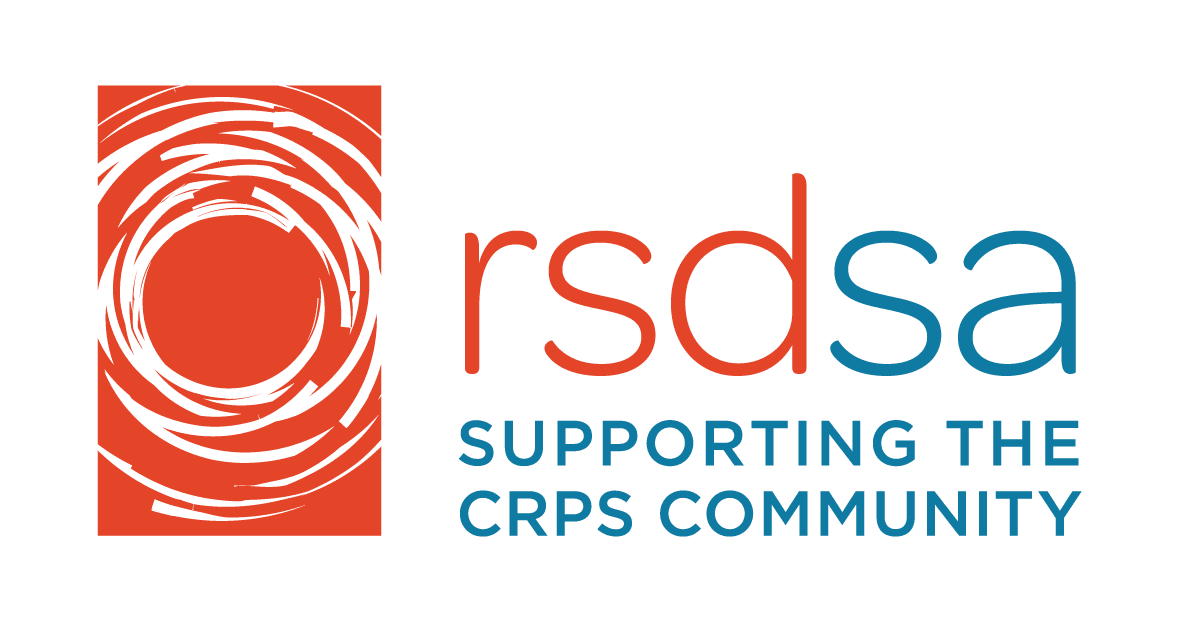
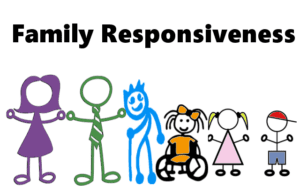 Written by Laura Lustig, PhD for the RSDSA blog.
Written by Laura Lustig, PhD for the RSDSA blog.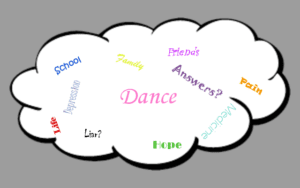 Written by Tatiana for the RSDSA blog.
Written by Tatiana for the RSDSA blog.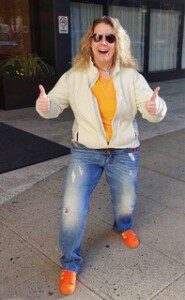 Written by Guest Blogger Jamynne Bowles
Written by Guest Blogger Jamynne Bowles By Guest Blogger Shannon Leidig
By Guest Blogger Shannon Leidig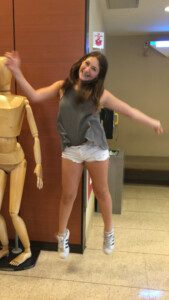 By Guest Bloggers Bobby and Lauren Gellert
By Guest Bloggers Bobby and Lauren Gellert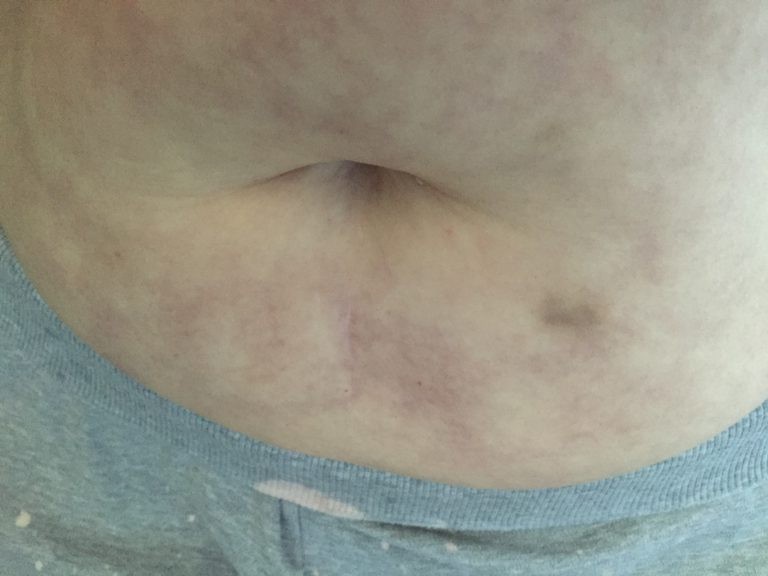 CRPS and GI issues may have some correlation. Our own Nurse Beth details her perspective on this issue as both a person living with chronic pain and as a nurse. How can we prepare ourselves for hospitals? How can we educate the staff? As we educate the world around us, here is her story: The frustration of living with CRPS spills over into everyday life we would all agree. Yet, speaking as a CRPS patient and Nurse, I have gained a unique point of view both as the health professional and now as the patient. Yet, my vulnerability as a patient was tested from an ER visit for acute abdominal pain and CRPS flares of my GI/colon.
CRPS and GI issues may have some correlation. Our own Nurse Beth details her perspective on this issue as both a person living with chronic pain and as a nurse. How can we prepare ourselves for hospitals? How can we educate the staff? As we educate the world around us, here is her story: The frustration of living with CRPS spills over into everyday life we would all agree. Yet, speaking as a CRPS patient and Nurse, I have gained a unique point of view both as the health professional and now as the patient. Yet, my vulnerability as a patient was tested from an ER visit for acute abdominal pain and CRPS flares of my GI/colon.
 Written by Guest Blogger Rachel Ehrenberg
Written by Guest Blogger Rachel Ehrenberg Written by Guest Blogger Alessia Zen
Written by Guest Blogger Alessia Zen